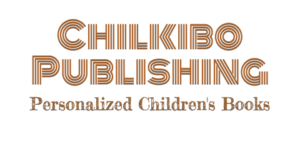
When perusing book titles, you may have noticed some have an “annotated edition” available. But what does this mean?
Annotated edition books mean that notes, comments, and essays written by field experts (such as literary critics or academics) are included to explain the context and significance of the book. Some annotated edition books have additional sections to make them more accessible to modern audiences.
In this article, I’ll explain more about annotated books, including why they’re published, who creates the annotations, and where to find such editions. I’ll also share tips on how to properly annotate a book yourself.
Why Does a Publisher Annotate a Book?
Annotated edition books are classics published with the original text alongside additional notes made by people who want supplemental information and analysis.Often, these editions are compiled and published by an organization to bring together different materials worldwide.
Publishers may annotate a book to offer personal insights and feelings about how the author chose to tell the story over time. Typically, the additional content is very explanatory and creative. However, older books may be annotated to make cultural differences relevant to younger generations.
Annotations Clarify Context and Misunderstandings
Publishers annotate books to help readers understand the context of a particular book and give them insight into the author’s intentions. Annotating a book can also provide context for passages of historical interest (for example, dates, statistics, etc.).
- Annotations clarify historical references and even help with pronunciation. Suppose a book gets republished after many years. In this case, publishers may provide new information about what has happened in popular culture since the book’s original publication date.
- Annotating a book makes it easier for readers to navigate the text. This is particularly useful when readers have difficulty in understanding a passage or are left with questions about its content and context. For instance, a publisher may add an annotation to explain cultural references in a book so that readers can understand them.
Annotations Better Inform and Emphasize
They want the reading public to understand their intentions for annotating the book. Annotating a book gives readers an inside look into the author’s process (and writing style). The annotation of a book shows that the publisher values and cares about the author’s manuscript.
Publishers may add an annotation when they want to note that they’ve made corrections to a book’s text.Some publishers will use an annotation to direct readers who want to know more about what they’ve just read.
Sometimes, they can merely call attention to something amusing or shocking in the text.
Annotations Provide and Properly Acknowledge Sources
Publishers will often add annotations listing the illustrations or photographs credited in the book. Annotation is a way to acknowledge resources, give credit, and avoid plagiarism. Publishers may also use annotations to point out that a book is a historical fiction, not confusing readers.
Furthermore, annotators will research on their own and add new insights that weren’t included in the author’s original book but are relevant nonetheless.It also helps libraries, schools, and other entities archive old publications in an accessible way.
In a classroom setting, annotating helps teachers provide supplemental resources and research aids for preparing lessons. Annotation helps teachers guide classroom discussions and avoid repetitive readings of specific sections or books so that students don’t miss out on learning valuable information in those publications.
The publisher may elaborate on something or clarify a complicated concept. Notes can also help explain confusing words or phrases or point out important historical references.
Who Makes Annotations for Books?
People who make annotations for books may include the original author, an editor, the publisher, readers, teachers, or professors. Notably, they’ve read the book and are familiar with the subject matter. Publishers have also been known to do a mix of in-house and out-of-house annotations.
Typically, annotations are written by someone who has expertise in the field so as to attract more readers.
Annotated edition books can be beneficial, offering historical context and information about people, places, events, symbols, and themes in the original text. When publishers annotate books, they establish themselves as experts in the field.
Where To Find Annotated Book Editions
Annotated books may form part of the permanent collection of a library or institution. Some annotated books also include part of the special collections of a library or institution and are often rare editions.
Notably, in an era of digital books, some institutions offer the ease of accessing a digital library of annotated books.
How To Annotate a Book
More and more students get tested on their ability to annotate texts, which helps to enhance their critical thinking skills.
Here are 3 tips on how to annotate a book:
- Highlight essential passages or words: Read the text carefully and take notes on what you think is essential. As you read, you should also try to understand the author’s purpose in writing the text. Why did they write it? Any important themes discussed? What is the thesis or argument the author is trying to make?
- Make marginal notes to comment on the text: For example, if your passage references some historical figure or event, look up the name of the person or occurrence to better understand the significance. Also be sure to look up keywords and phrases you don’t fully understand.
- Use symbols to rate your reactions to passages: After reading through the book once, go back through and annotate the margins with symbols and abbreviations to indicate main ideas and meaningful quotes and passages. You may also want to identify keywords in your margin notes by underlining them.

Keep in mind, the annotations can be worked into the book’s text or included as footnotes at the bottom of each page.
Three Main Styles of Annotating
You can use one of three styles when writing an annotation:
- The one-sentence annotation. This usually provides enough information to let the reader know what the book is about; it functions as a “teaser.”
- The descriptive annotation. This gives the reader a general idea of the material; it summarizes each part of the text and does not include an evaluation or opinion.
- The critical annotation. This includes information in a descriptive annotation and an evaluation or opinion about the source.
Conclusion
In general, annotated editions are great for people who love reading and want more insight into the story. Most publications come with an annotation. It’s a feature unique to the published content that helps the audience learn more about the book content or author. It adds a lot of value to the reading experience and can even inspire you to read more.
Students, especially those taking essay writing classes or college courses, find annotation helpful because they can get ideas from other experts or authors about the same topic. Furthermore, it helps find sources and references when creating papers.


